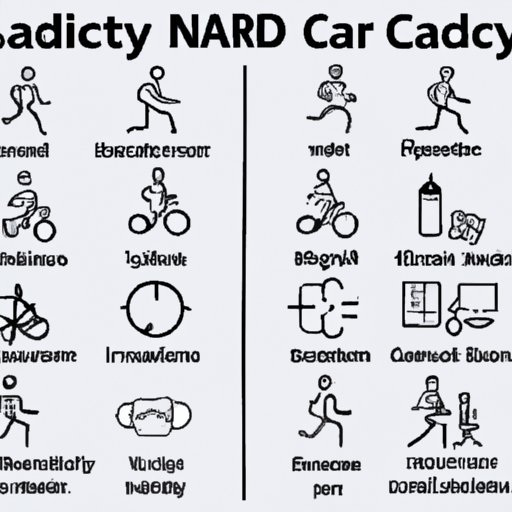Introduction
Cardiovascular exercise is an important part of any fitness routine. It helps strengthen your heart and lungs, improves circulation, and can even help you lose weight or maintain a healthy weight. But how much should you do each day? Read on to learn more about the benefits of cardio and how to incorporate it into your daily routine.
What is Cardio?
Cardio, short for cardiovascular exercise, is any type of physical activity that increases your heart rate and breathing rate. This could include walking, running, cycling, swimming, aerobics, rowing, and other activities. Cardio is great for improving your overall health, strengthening your heart and lungs, and increasing your endurance.
Benefits of Cardio
The benefits of cardio are numerous. Regular cardio can help reduce your risk for heart disease, stroke, and other chronic illnesses. It can also help you lose weight or maintain a healthy weight, as well as improve your overall energy levels. Plus, it’s a great way to relieve stress and boost your mood.
How to Incorporate Cardio Into Your Daily Routine
If you’re looking to add more cardio to your daily routine, there are a few things you should consider. First, what type of cardio exercises should you do and how often? Second, what is the right cardio intensity for optimal results? And third, what are the different types of cardio workouts and how do they impact your health? Let’s explore each of these topics in more detail.
What Cardio Exercises Should You Do and How Often?
The type of cardio exercises you choose will depend on your fitness level and goals. If you’re just getting started, you may want to begin with low-impact activities like walking, jogging, or light cycling. As you become more comfortable with cardio, you can move onto more intense activities like HIIT (High Intensity Interval Training), running, swimming, or aerobic classes. The frequency of your workouts will also depend on your goals. Generally speaking, aim for at least 30 minutes of moderate-intensity cardio three to four times per week.

The Right Cardio Intensity for Optimal Results
When it comes to cardio, intensity matters. Too little and you won’t see the benefits; too much and you could put yourself at risk for injury. To find the right intensity for your workouts, use the “talk test.” If you can carry on a conversation during your workout, then you’re at a moderate intensity. If you can only get out a few words at a time, then you’re at a high intensity.

Different Types of Cardio Workouts and Their Impact on Your Health
There are many different types of cardio workouts, from low-impact activities like walking and swimming to high-intensity activities like HIIT and running. Each type of workout has its own unique benefits and can have a positive impact on your health. Low-impact activities are great for those just starting out, while high-intensity activities can provide more of a challenge for experienced exercisers.
How Much Cardio Is Too Much?
Although regular cardio is important for maintaining good health, it’s possible to overdo it. Doing too much cardio can lead to fatigue, muscle soreness, and even injuries. It’s important to create a balanced exercise program that includes both cardio and strength training. Aim for 30 minutes of moderate-intensity cardio three to four times per week and two to three days of strength training. This will help ensure you’re getting enough of both without overdoing it.
Conclusion
Cardio is an important part of any fitness routine. It can help reduce your risk for chronic illness, improve your overall energy levels, and even help you lose weight. When incorporating cardio into your daily routine, it’s important to find the right type of exercises and intensity for optimal results. Finally, make sure to create a balanced exercise program that includes both cardio and strength training to avoid overdoing it.


